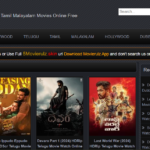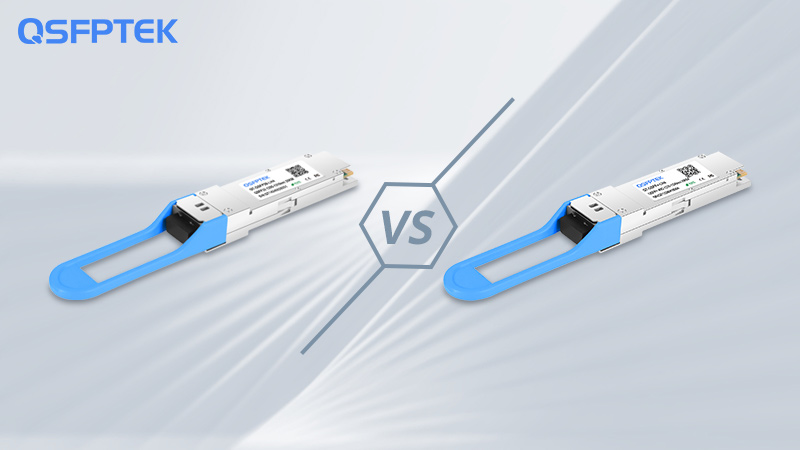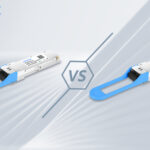In the high-speed network upgrade, QSFP28 and QSFP+ are mainstream optical module interfaces, and their compatibility directly affects equipment reuse and cost control. The core conclusion is: QSFP+ cannot support 100G, but QSFP28 is backward compatible with 40G QSFP+ modules. The following is a specific analysis:
Physical Interface and Electrical Compatibility
| Features | 40G QSFP+ | 100G QSFP28 |
| Interface form | 4 channels × 10Gbps NRZ | 4 channels × 25Gbps NRZ/50G PAM4 |
| Slot compatibility | Can be inserted into QSFP28 port (speed reduction operation) | Can be inserted into QSFP+ port (switch support required) |
| Power supply standard | 3.3V | 3.3V (higher power consumption) |
Mechanical structure is consistent: Both use 38 pins and the same size shell (18.35mm×89.4mm), and can be physically inserted into each other.
Electrical signal difference: QSFP+ single channel supports up to 10Gbps NRZ, while QSFP28 requires 25Gbps NRZ or 50Gbps PAM4 modulation to achieve 100G.
Rate Compatibility: Can it Support 100G?
QSFP+ → 100G: Not feasible
Bandwidth bottleneck: The total bandwidth of QSFP+’s four channels is 4×10Gbps=40Gbps, which cannot meet the 100G transmission requirements. For instance, if one plugs QSFP-LR4-40G 40GBASE-LR4 20KM modules into 100G QSFP28 ports, they will not support 100G rate.
Protocol limitation: Even if a 100G module (such as QSFP-100G-SR4) is forcibly inserted, the QSFP+ port will cause link negotiation failure due to the lack of 25G SerDes circuit.
QSFP28 → 40G: feasible (conditional)
Slowdown operation: QSFP28 ports can be configured to support 40G QSFP+ modules (such as QSFP-40G-SR4), and the modules work in 4×10Gbps mode.
Switch support requirements: The device firmware needs to enable rate adaptation (such as the speed 40000 command of Cisco Nexus 9000).
Hybrid Deployment Scenarios and Risks
| Combination method | Feasibility | Effective rate | Risk warning |
| QSFP+ module inserted into QSFP28 port | √ | 40G | automatically decelerates, no compatibility issues |
| QSFP28 module inserted into QSFP+ port | × | Link disconnected | Switch reports “Unsupported Transceiver” |
| QSFP28 to 4×SFP28 split | √ | 4×25G | only works when the switch supports Breakout mode |
Split capability difference:
QSFP+ can be split into 4×10G SFP+ (such as QSFP-40G-SR4 splits into 4 10G servers)
QSFP28 can be split into 4×25G SFP28 or 2×50G QSFP56
Selection Suggestions: Avoid Compatibility Traps
QSFP28 is a must for upgrading to 100G:
Make sure that the switch, optical module, and optical fiber (such as OM4/single mode) all support 25G channel rate.
Reuse of old 40G equipment solution:
Mix QSFP+ modules in QSFP28 switches to extend the life cycle of existing 40G links.
Refuse forced mixed insertion:
It is forbidden to insert QSFP28 modules into QSFP+ ports, which may trigger hardware protection and cause port meltdown.
Conclusion: Rationally Plan the Upgrade Path
QSFP28’s backward compatibility makes it possible for smooth network upgrades, but the evolution of QSFP+ to 100G has been locked by physical layer restrictions. The current optimal strategy is:
- New 100G core layer: full QSFP28 architecture (such as 100G-SR4/PSM4 modules)
- Edge layer reuse: QSFP28 switches reduce speed to access 40G QSFP+ devices
- Future verification: Choose QSFP28 modules that support PAM4 modulation (such as 100G-DR) to reserve upgrade space for 200G/400G.
Industry trend: With the popularization of QSFP-DD packaging, 100G will gradually migrate to higher density interfaces in the future, but QSFP28+QSFP+ hybrid networking is still the most cost-effective transition solution.







